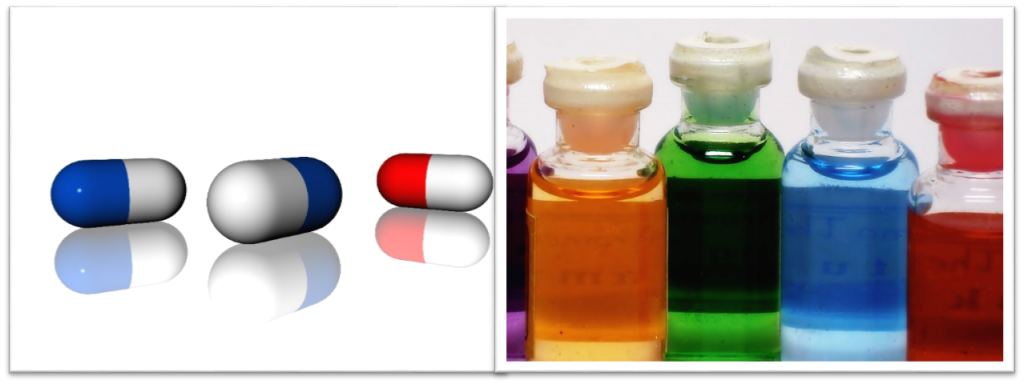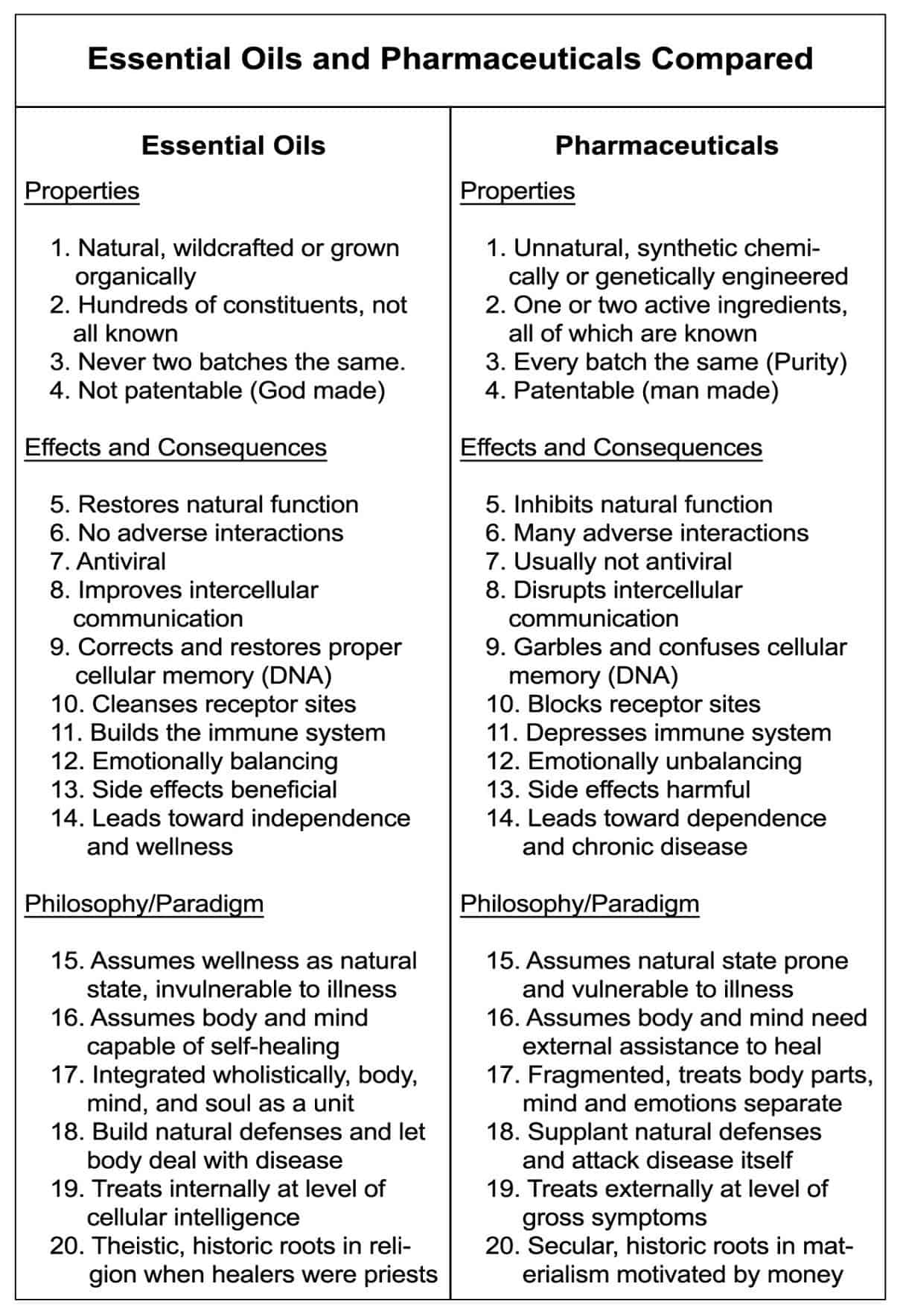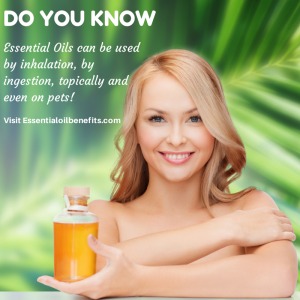Ready to Use Your Essential Oil?
Now that you’ve created your very first sample of essential oil, what the heck can you do with it? How to Use Essential Oils? Being that most essential oils are highly concentrated, it is not recommended to apply them directly to the skin. The safe way to apply to the skin is through the use of what is called a “carrier oil.” The typical carrier oils that are used to dilute essential oils are almond oil and grape seed oil, but you can use any kind of carrier oil that you would like to; there are lots of them. You would add those carrier oils after extraction and during the bottling process.
To get you started on how to use essential oils, we have put together a list of oil uses that are sure to get your imagination juices firing. The table below shows 30 essential oils and what they can be used for.
| No. | Name of Essential Oil | Issues essential oils have been proven to help with |
|---|---|---|
| 1 | Basil | Colds, coughs, bronchitis, flu, muscle aches and sinusitis. |
| 2 | Bergamot | Acne, oily skin, stress, anxiety, depression |
| 3 | Cypress | Excessive perspiration, hemorrhoids, menorrhagia |
| 4 | Dill | Amenorrhea, flatulence, gripping pains |
| 5 | Eucalyptus | Arthritis. Bronchitis, cold sores, catarhh |
| 6 | Frankincense | Anxiety, asthma, bronchitis, extreme coughing, scars, stress and stretch marks. |
| 7 | Geranium | Acne, Cellulite, dull skin, lice, menopause and oily skin. |
| 8 | Ginger | Aching muscles, arthritis, nausea, poor circulation. |
| 9 | Grapefruit | Dull skin, cellulitis, water retention |
| 10 | Jasmine Absolute | Depression, dry skin, labor pains |
| 11 | Juniper Berry | Flu, acne, obesity |
| 12 | Kanuka | Chicken pox, cold sores, candida |
| 13 | Lavender | Acne, vertigo, allergies, anxiety, stretch marks, athlete’s foot, minor bruises, minor burns , migraine headaches, colic, minor cuts, strains, ear pain , rheumatism, oily skin, depressions , minor scars, minor sores, asthma, sprains, everyday stress and whooping cough. |
| 14 | Lemon | Athlete’s foot, chilblains, colds, corns, dull skins, flu, oily skin spots, varicose veins on the body and warts. |
| 15 | Oregano | Carvacrol, thymol, cymene, caryophyllene, pinene, bisabolene, linalool, borneol, geranyl acetate, linalyl acetate and terpinene. |
| 16 | Peppermint | Colic, asthma, fever |
| 17 | Rose | Depression, eczema, frigidity |
| 18 | Rosemary | Dandruff, muscle aches, gout |
| 19 | Rosewood | Colds, fever, stretch marks |
| 20 | Sage | Menstrual and PMS problems, liver issues, loss of hair, dry scalp (dandruff), asthma, bronchitis, digestion issues, gingivitis, lymphatic system, night sweats, various skin issues and metabolism. |
| 21 | Scotch Pine | Colds, flu, rheumatism |
| 22 | Spearmint | Scabies, fever, vertigo |
| 23 | Spruce | Depression and coughing |
| 24 | Sweet Orange | Colds, constipation, flu, gums, dull skin and everyday stress. |
| 25 | Tea Tree | Ringworm, acne, urethritis, whooping cough, candida, colds, corns, cuts, chickenpox, flu, insect bites, itching, sinusitis, migraine, oily skin, sores, spots, cold sores, warts and athlete's foot. |
| 26 | Tea Tree - New Zealand | Athlete’s foot, flu, insect bites |
| 27 | Tobacco | Perfumery |
| 28 | Vanilla Absolute | Natural skin and hair care |
| 29 | Violet Leaf Absolute | Bronchitis, insomnia, colds |
| 30 | Ylang Ylang | Anxiety, depression, hypertension |
The importance of using carrier oils with essential oils
Without the mixing of carrier oils with essential oils, most of them, if not all of them, would be hazardous to the human skin. Carrier oils are needed to dilute the effects of the highly concentrated essential oil, making them safe to apply to the skin.
What are the most popular carrier oils?
There are many carrier oils available today online, but the two most popular are:
- Almond oil
- Grape seed oil
What is the list of carrier oil?
If you are feeling adventurous and are ready to try other carrier oils with your essential oil, this list here should be a great starting point for you.
| 1 | Almond oil | 11 | Grapeseed oil | 21 | Pomegranate seed oil |
| 2 | Apricot kernel oil | 12 | Hazelnut oil | 22 | Rose hip oil |
| 3 | Avocado oil | 13 | Hemp seed oil | 23 | Sea buckthorn berry oil |
| 4 | Black cumin seed oil | 14 | Jojoba oil | 24 | Sesame oil |
| 5 | Borage seed oil | 15 | Kukui nut oil | 25 | Sunflower seed oil |
| 6 | Camellia seed oil | 16 | Macadamia nut oil | 26 | Sweet almond oil |
| 7 | Coconut oil | 17 | Meadowfoam oil | 27 | Watermelon seed oil |
| 8 | Cranberry seed oil | 18 | Olive oil | ||
| 9 | Emu oil | 19 | Peanut oil | ||
| 10 | Evening primrose oil | 20 | Pecan oil |
Essential Oils Medical Uses versus Pharmaceutical Uses to the human body
 (Image source: freeimages)
(Image source: freeimages)
Medicines and essential oils work in opposites. Medicines toxify, Essential oils detoxify.
Essential oils and pharmaceutical medicines have been compared to one another many times over through the years and their effects to cure sickness. No two opinions from a medical doctor or an aromatherapist are ever quite the same.
Aromatherapists preach that essential oils can be used to cure some sicknesses with no side effects because they are all natural. Medical doctors have a hard time believing this because they have been taught in medical school that if a medicine doesn’t have side effects, then it must not be a very effective medicine to begin with. Medical doctors have to weigh the risk versus the reward with medicines and their chances of saving a life or curing an illness.
You will find the table below useful in giving you a quick overview of Essential oils versus Pharmaceuticals.
 (Image source: healthimpactnews)
(Image source: healthimpactnews)
Three Ways to use Essentials Oils
Today, there are only three recognized ways of using essential oils effectively.
- Topical
- Inhalation
- Ingestion
Note: Always check if a targeted oil is certified by the GRAS (Generally Regarded as Safe) by the FDA. Only then can an oil be considered safe to put inside the body.
1. How to use Essentials Oils topically
By using essential oils topically is meant that you simply apply the essential oil externally on your body. Put a few drops of your favorite essential oil in the palm of your hand and rub it on your skin.
Topical use is effective for pain relief, aches, body and muscle sores. Sometimes, this can bring immediate relief. Here are a few ways to use essential oils topically. You need to be very careful when using essential oils with children, older people and people with very sensitive skin. For those cases, you may wish to do a test patch first and a good safe place to trial it is the soles of the feet.
Here are some of the most common topical uses of essential oils:
- Rub some eucalyptus oil on your chest to relieve congestion.
- Rub a few drops of peppermint on your temples to relieve a headache or on your belly to relieve a stomachache.
- Rub some basil oil on your sore muscles for some relief.
2. How to use essential oil through Inhalation
The easiest way to inhale your favorite essential oil is to simply open the bottle and smell it lightly. The next easiest is to put a few drops of oil on your hands, rub them together and then inhale. If your sinuses are blocked, well you have a very effective method to clear them.
Now, if you are feeling stressed after a hard day’s work or simply want to relax reading a book, you can gently unwind by filling up the air in your room with an essential oil. For that, you can use a diffuser. Remember smells and emotions work together.
Here are some of the common inhalation uses of essential oils:
- Lavender: This is one of the best essential oil used for stress relief. This oil calms and helps with sleep.
- Frankincense: This oil has many uses, in particular for anxiety and stress relief. It can also be used to soothe coughs as well as support a healthy immune system.
- Ylang Ylang: Ylang Ylang is very good to control stress levels and to combat hypertension.
- Lemon, Bergamot, Grapefruit: All these citrus oils can be used for the natural immune system and overall health, provide stress relief and freshen your entire house.
3. How to use Essentials Oils Internally, i.e. through Ingestion
You won’t find a lot of experts talking about using essential oils inside the body, i.e. by ingestion. The simple reason is that it can be dangerous to use essential oils inside the body. However, if done the right way, the results can be profound.
Here are some safe and effective ways to ingest essentials oils. Please remember that if you have any doubts about the essential oils you have selected, always consult with a trained/qualified aromatherapist first before ingesting.
Ingesting essential oils
After you have verified and made 100% sure that the essential oil you have researched and selected to ingest is on the GRAS list, then you can move to phase two. This second phase is to choose the highest quality oils you can find. When researching oils you plan to use internally, you must ask yourself:
- Is the oil genuine?
- Is it actually 100% natural with no chemical enhancements?
- Is it 100% pure with no other essential oils mixed into it?
- Is it 100% “complete?” This means that it hasn’t been decolorized, recolored or deterpenated.
- Is the oil 100% authentic? Are the contents in the bottle actually from the plant species listed on the label?
Making the decision to ingest essential oils is not a decision that should be taken lightly. If not researched properly, you could ingest one that was not made for ingesting. Believe me, it can get pretty confusing with all the above items that you need to double and triple check. You may already know of great places to get your own oils from and that you trust and that’s fine. Please note that those bath and body type department stores that sell essential oils, their oils are mostly for making rooms in your home smell good. They are heavily enhanced with perfumes and should not be ingested.
There are a few ways to use essential oils internally:
- You can add a few drops of your favourite essential oil to a glass of water, juice or to a teaspoon of honey. For example, a drop of sweet orange will not only taste great but will also help you with your cold and flu.
- You can use it undiluted, i.e. put a few drops on your tongue and ingest it.
- You can use it for cooking, which I cover in some more detail below.
Which essential oils can I use internally?
- Thieves blend: This is a great blend when your immune system is down and it can even prevent a cold.
- Lemon, Grapefruit: This can very safey be used in your favourite juice or simply add to a glass of water.
- Peppermint: This can relieve an upset stomach and help with digestion.
Cooking with essential oils
Is there anything you cannot do with essential oils these days? The short answer is no! To prove this, essential oils are now being promoted as safe to add to a person’s daily cuisines to promote healthy eating.
Some of the mouth-watering essential oil cooking flavors that can be used to enhance your normal meals are:
- Dill
- Black Pepper
- Cinnamon Bark
- Basil
- And more!
So the next time you reach for the store-bought sugary cinnamon to sweeten a meal, keep it on the shelf and add a few all natural drops of naturally flavored cinnamon bark essential oil instead.
Essential Oil Uses on Pets
Did you know that there are essential oils that are designed to be used on your cats and dogs? Well there is! There is even a collection of essential oils for both small and large animals, not just cats and dogs. A true animal lover can find online products such as:
- Animal ointments: The ointments are all natural and designed to treat minor scrapes and cuts your favorite animal might run into on a day to day basis. The ointment are blended with Melaleuca Alternifolia and Myrrh. These two oils are known to be two of nature’s most powerful. This ointment is for external use on animals only. Using essential oil animal ointments are gentle and safe on animals as opposed to other unnatural and sometimes harmful chemicals or synthetic products.
- Animal shampoos: The shampoos too are all natural and designed to clean and condition the pet’s fur with no harmful chemicals often found in over-the-counter pet care products. The shampoos generally have five powerful oils in them blended to gently clean and add luster to your animal furry coat.
The five powerful essential oils found in animal shampoos are:
– Citronella Oil
– Lavandin Oil
– Lemon Peel Oil
– Geranium Flower Oil
– Spikenard Oil
Conclusion
Essential oils have come a long ways in the last century and have now made their way to main-stream America. It’s actually popular to use essential oils these days. With each growing day, we learn more and more about these majestic oils which keeps us able to expand their uses each day. We can now use essential oils today for stress, healing, inhaling, eating, and putting on our pets and cleaning our houses and clothes. You may think that we as humans have already thought of every single possible way to use essential oils. Don’t sell the human imagination short… I’m sure we’re not many years away from a person creating the very first essential oils breakfast cereal. Hey, it could happen…let’s use essential oils today!

